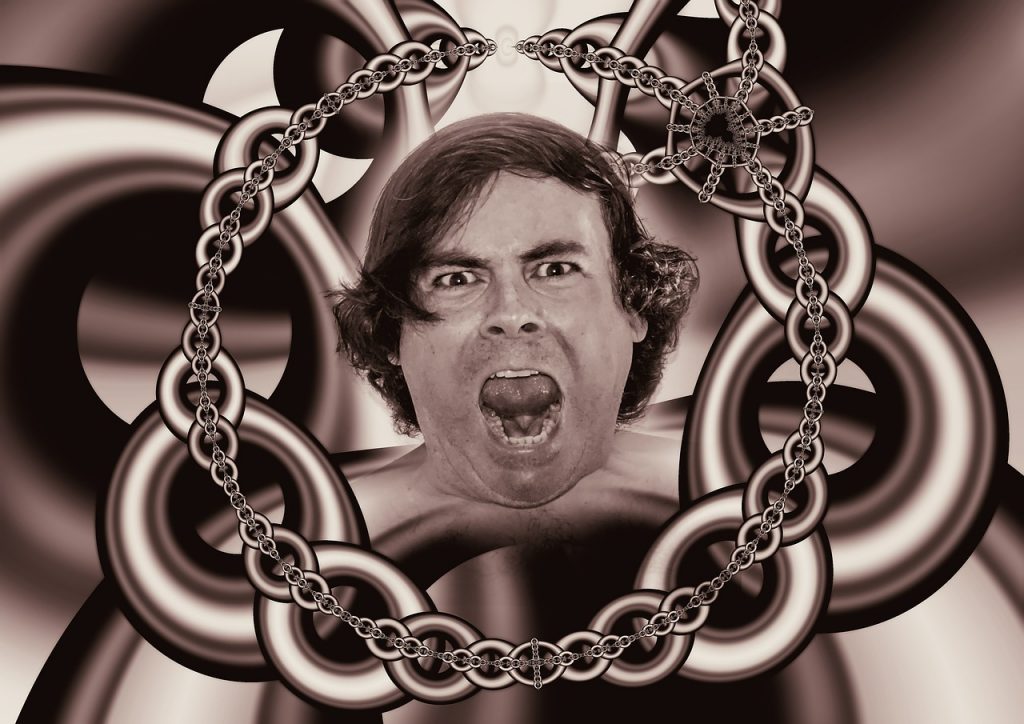This post is also available in Dutch.
People suffering from psychotic-like experiences tend to believe in surreal things. But do you believe in those things as well?
All humans have something in common: We prefer that some things in our lives be predictable. We like to be sure that our bikes will be where we left them; we like our computers to respond every time we press a button; and we even like to be sure that we can always trust our best friends. Unfortunately, for those who are haunted by psychotic-like experiences (PLEs), even the strongest certainties are put into question.
What are PLEs?
PLEs are typical symptoms exhibited by patients with schizophrenia, mood disorders, paranoid personality disorder, and other psychotic disorders. When a patient is diagnosed with (at least) one of these disorders, PLEs are commonly manifested in two ways: hallucinations and delusions.
Hallucinations are false perceptions of the senses, like when a person lost in the desert is tricked by the fake sight of an oasis. Psychotic patients can indeed suffer from visual hallucinations, but the most common form is auditory, in the form of voices.

Image courtesy of Thomas Wolter and Pixabay (CC0 1.0).
Most of the time, the reported voices don’t say nice things. Patients usually complain that the voices in their heads badger them with negative, judgmental and humiliating remarks. For example, these voices may constantly accuse the patient of “evil” intentions, or even give orders about what the patient must do.
These hallucinations can, to a certain extent, relate to the other aspect of psychosis: delusions, which are false beliefs that are reinforced in a patient’s mind over time. Delusions can assume a bunch of forms:
- Grandiose: Patient believes they are a preeminent figure worldwide (e.g., rich and famous).
- Referential: Patient believes they’re receiving secret communications during daily-life events (e.g., encoded messages from the newscaster while watching TV).
- Religious: Patient believes they have a connection with a “higher power” and the “world of the divine”.
These are just a few examples of the many different types of delusions. Perhaps they remind you of some movies and other pieces of art for which creators found inspiration in patient reports of PLEs. These reports provide us with powerful insight into the severe burden caused by PLEs.
PLEs may be the key to curing psychosis
Despite being part of the problem, PLEs can also contribute important information about psychotic disorders. In fact, scientists are convinced that PLEs are not something exclusive to psychotic patients, but a trait that can be seen across the whole population (i.e., some people have more, some less).
Research shows that PLEs can be explained by biological factors that can be found by studying the human genome or brain. These factors are relatively prevalent in the whole population and, together with environmental risks such as childhood abuse or drug addiction, can influence an individual’s likelihood of being at the extreme end of a psychiatric condition.
Currently, society views psychiatric diagnosis as a yes-or-no question (i.e., Do you have a disorder or not? Which disorder do you have?). The advantage of looking into PLEs is that you can see beyond limited labels and, instead, more accurately identify patient symptoms without the predetermined bounds of pure diagnoses.
Maybe you’re wondering right now whether you’ve ever felt some sort of PLE. Maybe… but the fact that you’re being critical about it is a sign that there’s nothing wrong. These types of symptoms only become a problem when they assume total control of your actions. That’s the problem that psychotic patients face every day, and that’s what clinicians and researchers are trying to solve.
Original language:
English
Author: João Guimarães
Buddy: Christienne Gonzales
Damatac
Editor: Monica Wagner
Translator: Wessel/Rowena
Emaus
Editor Translation: Felix
Klaassen
Credits: Top image courtesy of Gerd Altmann and Pixabay (CC0 1.0).
